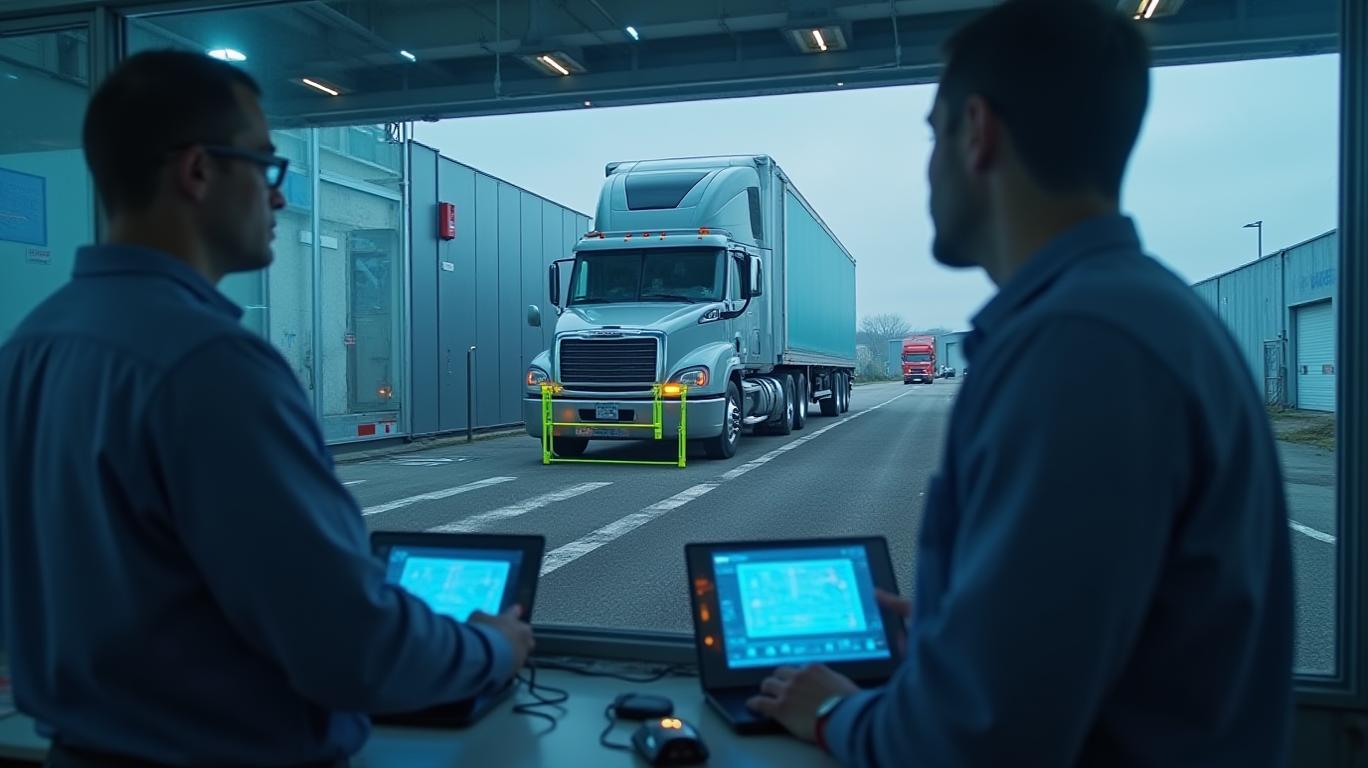OSI Systems: Securing the Future with $50M in Advanced Cargo Inspection Contracts
In a rapidly evolving global security landscape,
, Inc. (NASDAQ: OSIS) has secured a pivotal $50 million contract to deploy its cutting-edge Rapiscan Cargo and Vehicle Non-Intrusive Inspection technology for a major U.S. government client. This award, announced on April 29, 2025, underscores the company’s position as a leader in homeland security infrastructure—a market increasingly critical to national defense and international trade.The Strategic Importance of the $50M Awards
The contracts, awarded to OSI’s Security division, focus on enhancing cargo checkpoint security infrastructure through advanced systems like Real Time Tomography (RTT) and Z Backscatter Van (ZBV). While the customer’s identity remains undisclosed, the U.S. government’s emphasis on border security and logistics suggests it is likely a federal agency such as U.S. Customs and Border Protection (CBP) or the Department of Homeland Security (DHS).

The deal’s significance lies in its lifecycle support component. Rather than a one-time hardware sale, the contract reflects long-term trust in OSI’s ability to maintain and upgrade systems—a model that generates recurring revenue. This contrasts with competitors offering only upfront sales, positioning OSI for sustained cash flow.
The Technology Driving Demand
Rapiscan’s Non-Intrusive Inspection (NII) systems leverage advanced imaging to detect contraband, explosives, and other threats without physically opening cargo. For instance:
- RTT® 110: Uses tomographic scanning to inspect hold baggage at airports.
- ZBV®: A mobile unit for on-site vehicle and container screening.
- Eagle® M60: A high-energy cargo inspection system for rail and truck traffic.
These technologies are critical in an era where smuggling, terrorism, and illicit trafficking remain global threats. The U.S. government’s focus on modernizing border infrastructure aligns with OSI’s expertise, as seen in prior contracts like a $42 million 2024 order for airport security systems and a $17 million 2024 deal for radiation monitoring equipment.
Market Position and Competitive Landscape
OSI’s vertical integration—combining 40+ years of electronics engineering with global manufacturing—is a key competitive advantage. Unlike software-centric rivals, OSI controls every aspect of production, from chip design to final assembly. This ensures reliability and scalability, crucial for large-scale government projects.
While competitors like Smiths Detection and Thales Group offer similar technologies, OSI’s focus on U.S. government contracts gives it a domestic edge. The company’s global footprint—operations in over a dozen countries—also positions it to capitalize on international demand, as seen in a $24 million April 2025 order for Z Portal® systems to an undisclosed international client.
Financial Implications and Risks
The $50 million award directly boosts OSI’s 2025 revenue, complementing its record $1.2 billion fiscal 2024 performance. Recurring lifecycle support contracts like this one also reduce revenue volatility. However, risks include:
- Contract dependency: Over 70% of Security division revenue comes from U.S. government clients, raising geopolitical risk.
- Regulatory shifts: Changes in border security priorities could delay future orders.
- Technological obsolescence: Competitors’ AI-driven systems (e.g., neural network-based threat detection) may erode OSI’s lead.
Conclusion: A Strategic Play in Homeland Security Tech
OSI Systems’ $50 million win is more than a contract—it’s a validation of its lifecycle support model and technological leadership. With the U.S. government’s infrastructure spending poised to grow (the Biden administration’s $280 billion infrastructure plan includes border security upgrades), OSI stands to benefit from sustained demand.
Historically, the company has delivered:
- Revenue growth: Security division revenue surged 18% in FY2024 to $450 million.
- Operational efficiency: Gross margins remain stable at ~35%, reflecting vertical integration benefits.
While risks exist, OSI’s track record and strategic focus make it a compelling investment. Investors should monitor upcoming contract announcements and geopolitical developments, but the fundamentals suggest this $50 million deal is just the start of a larger opportunity in critical infrastructure security.
In a world where cargo inspection technology is becoming as vital as cybersecurity, OSI’s blend of innovation and reliability positions it to secure—and profit from—the future of border security.

Comments
No comments yet